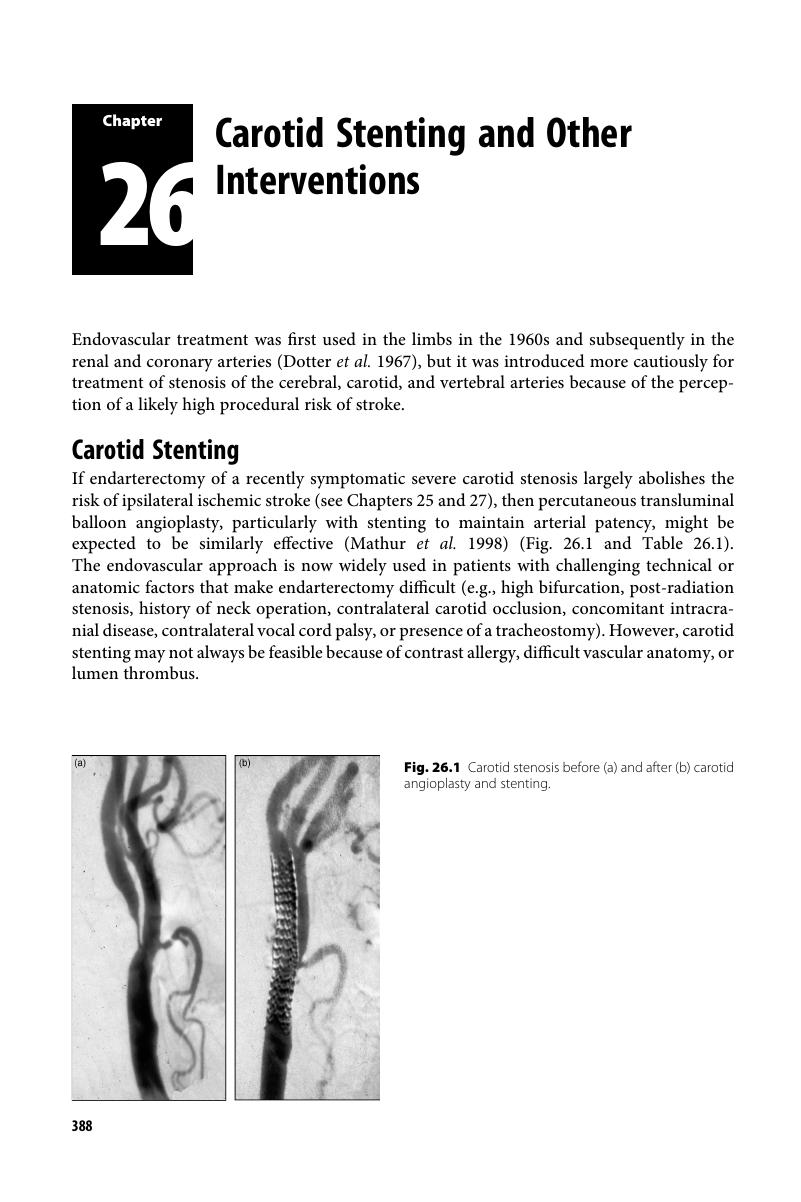Book contents
- Transient Ischemic Attack and Stroke
- Transient Ischemic Attack and Stroke
- Copyright page
- Contents
- Preface to the Second Edition
- Section 1 Epidemiology, Risk Factors, Pathophysiology, and Causes of Transient Ischemic Attacks and Stroke
- Section 2 Clinical Features, Diagnosis, and Investigation
- Section 3 Prognosis of Transient Ischemic Attack and Stroke
- Section 4 Treatment of Transient Ischemic Attack and Stroke
- Section 5 Secondary Prevention
- Chapter 24 Medical Therapies
- Chapter 25 Carotid Endarterectomy
- Chapter 26 Carotid Stenting and Other Interventions
- Chapter 27 Selection of Patients for Carotid Intervention
- Chapter 28 Intervention for Asymptomatic Carotid Stenosis
- Section 6 Miscellaneous Disorders
- Index
- References
Chapter 26 - Carotid Stenting and Other Interventions
from Section 5 - Secondary Prevention
Published online by Cambridge University Press: 01 August 2018
- Transient Ischemic Attack and Stroke
- Transient Ischemic Attack and Stroke
- Copyright page
- Contents
- Preface to the Second Edition
- Section 1 Epidemiology, Risk Factors, Pathophysiology, and Causes of Transient Ischemic Attacks and Stroke
- Section 2 Clinical Features, Diagnosis, and Investigation
- Section 3 Prognosis of Transient Ischemic Attack and Stroke
- Section 4 Treatment of Transient Ischemic Attack and Stroke
- Section 5 Secondary Prevention
- Chapter 24 Medical Therapies
- Chapter 25 Carotid Endarterectomy
- Chapter 26 Carotid Stenting and Other Interventions
- Chapter 27 Selection of Patients for Carotid Intervention
- Chapter 28 Intervention for Asymptomatic Carotid Stenosis
- Section 6 Miscellaneous Disorders
- Index
- References
Summary

- Type
- Chapter
- Information
- Transient Ischemic Attack and StrokeDiagnosis, Investigation and Treatment, pp. 388 - 398Publisher: Cambridge University PressPrint publication year: 2018



